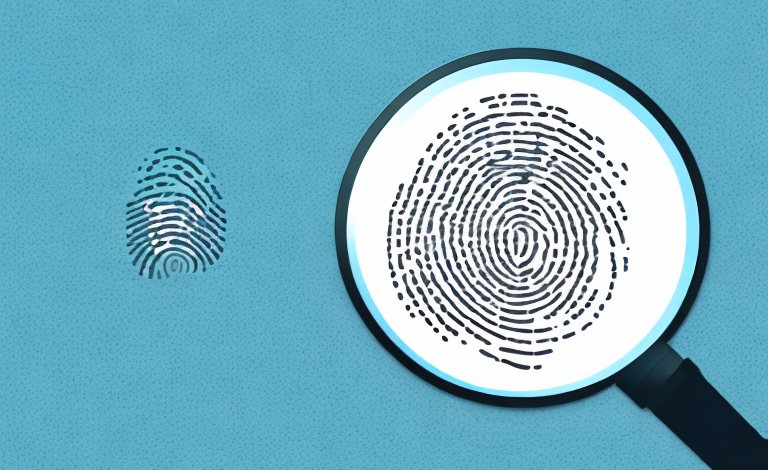Fingerprint identification has been the hallmark of forensic science for over a century, providing a reliable and consistent method of identification for criminals and victims alike. However, how accurate is fingerprint identification? In this article, we delve into the science, history, and limitations of fingerprint identification to determine how accurate it truly is.
The science behind fingerprint identification
The uniqueness of each individual’s fingerprints is the basis of fingerprint identification. The ridges and valleys on fingertips are formed during fetal development and remain unchanged throughout one’s lifetime. This means that every person has a different set of fingerprints that can be used to identify them with high accuracy.
Fingerprint identification is based on analyzing the minutiae, or the specific characteristics of each fingerprint. These include the number of ridges, the shape and direction of ridges, and the presence of whorls or loops. By comparing a suspect’s fingerprints with those found at a crime scene, forensic experts can determine whether or not the two sets of prints match.
One of the earliest recorded uses of fingerprint identification was in ancient Babylon, where fingerprints were used on clay tablets for business transactions. However, it wasn’t until the late 19th century that the scientific study of fingerprints began, with the work of Sir Francis Galton. Galton’s research showed that fingerprints were unique and could be used for identification purposes.
Today, fingerprint identification is widely used in law enforcement and other fields. In addition to criminal investigations, fingerprints are used for background checks, employee identification, and even to access secure areas. The accuracy and reliability of fingerprint identification make it an invaluable tool for identifying individuals and solving crimes.
The history of fingerprint identification and its evolution
The first known use of fingerprint identification occurred in the late 19th century, when Sir Francis Galton and Sir Edward Henry developed a classification system for fingerprints. This system is still widely used today.
Over the years, fingerprint identification has evolved with the introduction of new technologies, such as digital imaging and computer databases. These advancements have made it easier to collect, analyze, and compare fingerprints, resulting in increased accuracy and efficiency in criminal investigations.
In addition to criminal investigations, fingerprint identification is now used in a variety of industries, including healthcare and finance. In healthcare, fingerprints are used to securely identify patients and access medical records. In finance, fingerprints are used for secure authentication and to prevent fraud. The use of fingerprints in these industries has increased the demand for more advanced and accurate fingerprint identification technology.
The accuracy of fingerprint identification in criminal investigations
Fingerprint identification has proven to be highly accurate in criminal investigations. According to the International Association for Identification, the probability of two individuals having the same fingerprints is approximately 1 in 64 billion. This high level of accuracy has led to countless convictions and exonerations based on fingerprint evidence.
However, it is important to note that fingerprint identification is not foolproof and can be subject to human error. In some cases, fingerprints may be smudged or distorted, making it difficult to accurately identify a suspect. Additionally, there have been instances of wrongful convictions based on faulty fingerprint analysis. Therefore, while fingerprint identification is a valuable tool in criminal investigations, it should always be used in conjunction with other forms of evidence and analyzed by trained professionals.
Limitations and challenges in fingerprint identification
Despite its accuracy, fingerprint identification is not infallible. Challenges can arise when dealing with partial, distorted, or degraded prints. In addition, some individuals’ fingerprints may be difficult to identify due to age or medical conditions.
There is also the possibility of human error in the collection and analysis of fingerprint evidence, as well as the potential for bias in interpretation. These limitations underscore the importance of using multiple sources of evidence in criminal investigations.
Another challenge in fingerprint identification is the possibility of intentional alteration or manipulation of fingerprints. Criminals may attempt to alter their fingerprints through various means, such as burning or cutting their fingertips, in order to avoid detection. This can make it difficult or impossible to accurately identify the individual through their fingerprints.
Furthermore, the use of fingerprint identification as a sole means of identification has been criticized for its potential to perpetuate racial and socioeconomic biases. Studies have shown that certain populations, such as those with darker skin tones or manual laborers, may have more difficulty producing clear and identifiable fingerprints. This can lead to inaccurate identifications and wrongful convictions.
How technology is improving the accuracy of fingerprint identification
New technologies, such as enhanced scanners and imaging software, are improving the accuracy of fingerprint identification. The development of automated fingerprint identification systems (AFIS) has also been a game-changer in forensic science, allowing for quicker and more thorough analysis of fingerprint evidence.
In addition to AFIS, other technologies are also being developed to improve the accuracy of fingerprint identification. One such technology is the use of 3D imaging, which captures the ridges and valleys of a fingerprint in greater detail than traditional 2D imaging. This allows for more precise matching and identification of fingerprints, even in cases where the print is distorted or incomplete. Another technology being explored is the use of artificial intelligence and machine learning algorithms to analyze and match fingerprints, which could further improve the speed and accuracy of identification.
Fingerprint identification in forensic science
Fingerprint identification is a crucial component of forensic science, providing law enforcement with a powerful tool for identifying suspects and solving crimes. It is often used in conjunction with other forensic techniques, such as DNA analysis and ballistics testing.
One of the key advantages of fingerprint identification is its reliability. Fingerprints are unique to each individual, and even identical twins have different fingerprints. This means that if a fingerprint is found at a crime scene, it can be matched to a suspect with a high degree of accuracy.
However, fingerprint identification is not foolproof. In some cases, fingerprints may be distorted or incomplete, making it difficult to match them to a specific individual. Additionally, there have been cases where fingerprint analysis has been called into question due to human error or bias.
The role of fingerprint databases in solving crimes
Fingerprint databases play a crucial role in solving crimes, allowing for the speedy identification of suspects and the linking of multiple crimes to a single perpetrator. The FBI’s Integrated Automated Fingerprint Identification System (IAFIS) contains over 70 million sets of fingerprints, making it one of the largest databases in the world.
In addition to aiding in the identification of suspects, fingerprint databases can also be used to exonerate innocent individuals who may have been wrongly accused or convicted of a crime. By comparing fingerprints found at a crime scene to those in the database, investigators can rule out individuals who were not present at the scene and focus their efforts on finding the true perpetrator.
Privacy concerns related to the use of fingerprints for identification
The use of fingerprints for identification has raised privacy concerns, particularly in regards to the collection and storage of biometric data. Some worry that this data could fall into the wrong hands or be misused by law enforcement or other entities.
However, stringent regulations are in place to protect individuals’ privacy rights and limit the use of fingerprint data to legitimate law enforcement purposes.
Another concern related to the use of fingerprints for identification is the potential for false positives or false negatives. In some cases, fingerprints may not be accurately captured or matched, leading to errors in identification. This could have serious consequences, such as wrongful arrests or the release of dangerous criminals.
Additionally, there is a risk of discrimination based on fingerprints. Certain populations, such as those with certain medical conditions or manual laborers, may have fingerprints that are more difficult to capture or match accurately. This could lead to unequal treatment or exclusion from certain services or opportunities.
How to properly collect and analyze fingerprints for accurate identification
The proper collection and analysis of fingerprints is crucial for achieving accurate identification. Forensic experts follow strict protocols for collecting prints, taking care to avoid contamination and to preserve the integrity of the evidence.
Analysis of prints involves comparing known prints with those found at a crime scene, looking for matching minutiae and evaluating the quality of the prints. The use of digital imaging and software tools can aid in this process.
It is important to note that not all surfaces are suitable for collecting fingerprints. Porous surfaces, such as paper or fabric, can be difficult to obtain clear prints from. In addition, prints left on surfaces that are frequently touched, such as doorknobs or light switches, may be smudged or distorted.
Another factor to consider is the age of the prints. Fresh prints are more likely to yield clear and identifiable results, while older prints may have deteriorated or been contaminated over time.
The reliability of fingerprints in identifying deceased individuals
Fingerprints can also be used to identify deceased individuals, particularly in cases where other forms of identification are not possible. The uniqueness and consistency of fingerprints make them a reliable method of identification in such cases.
In addition to their reliability in identifying deceased individuals, fingerprints can also provide valuable information about the cause of death. For example, the presence of certain substances or chemicals in a fingerprint can indicate poisoning or drug use. This information can be crucial in determining the cause of death and identifying potential suspects.
Furthermore, advancements in technology have made it possible to identify fingerprints that were previously considered too degraded or damaged to be useful. This has opened up new possibilities for solving cold cases and identifying victims of natural disasters or other tragedies where traditional forms of identification may not be possible.
Fingerprint identification in border control and national security
In addition to its use in criminal investigations, fingerprint identification is also used in border control and national security. Biometric passports and visas use fingerprints as a means of verifying an individual’s identity, while fingerprint scanners at airports and other high-security areas help to prevent unauthorized access.
Fingerprint identification has become an essential tool in the fight against terrorism and other security threats. In many countries, law enforcement agencies use fingerprint databases to identify and track suspected terrorists and criminals. Fingerprint analysis has also been used to identify victims of terrorist attacks and natural disasters, helping to bring closure to families and loved ones.
Future advancements in fingerprint identification technology
The future of fingerprint identification looks promising, with ongoing research and development focused on improving accuracy and efficiency. New technologies, such as 3D imaging and nanotechnology, may pave the way for even more advanced methods of fingerprint analysis.
Comparing fingerprint identification to other biometric technologies
While fingerprint identification remains the most widely used biometric technology, other methods, such as facial recognition and iris scanning, are gaining popularity. Each method has its own strengths and limitations, and the choice of which to use depends on the specific needs of the application.
In conclusion, fingerprint identification is a highly accurate and reliable method of identification in criminal investigations and beyond. While there are limitations and challenges to its use, ongoing advancements in technology and continued adherence to best practices ensure that it will remain a valuable tool for forensic experts for years to come.



